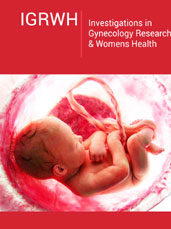- Submissions

Abstract
Investigations in Gynecology Research & Womens Health
“A Poor Ovarian Reserve”- Career Oriented Women’s Fertility Challenge!
-
Open or CloseSuresh Kishanrao*
Family Physician & Public Health Consultant, India
*Corresponding author:Suresh Kishanrao, Family Physician & Public Health Consultant, Bengaluru, Karnataka, India
Submission:May 07, 2025;Published: June 04, 2025
Abstract
Abstract: Infertility is a significant global health issue, affecting millions of people worldwide and posing challenges for individuals, families, and communities. Globally, one in six people experience infertility at some point in their reproductive lives, meaning for many couples, the desire to have a family is not easily realized. India, the nation, dubious distinction for having high fertility rates, is experiencing a dramatic drop in birth rates in recent decades, coupled with an increase in cases of infertility. Urbanization, modified lifestyles, delayed marriages, obesity, diabetes, thyroid problems, endometriosis, uterine fibroids shifting career priorities, & rising contraceptive usage are the causes of female infertility. Similarly, late marriage, environmental toxins, and lifestyle choices contribute to the high rates of male infertility. Infertility in India is becoming a major public health concern
Availability, access, and quality of interventions to address infertility remain a challenge in most countries, so is the situation in India where the requisite services are limited to most cities and are inaccessible due to the cost factor for an average Indian couple. Diagnosis and treatment of infertility is often not prioritized in national population & development policies and reproductive health strategies are rarely covered through public health financing. Fertility specialists of Bengaluru in an Infertility Awareness week 2025 recently, attributed and warned the cause for female infertility to be “A Poor Ovarian Reserve “in one thirds of female infertility cases seeking help. This article is an observation of policy implications, and to draw attention of all concerned to alarming infertility in India, which is going unnoticed due to large population.
Materials and Methods: This article is in response to an alert raised by gynaecologists in the recent infertility awareness week 2025 and analysing the causes of primary and secondary infertility among 25 childless and single child young couples married for at least 5 years and supported by appropriate Global and National literature search.
Outcome: Out of 11 cases quoted (7 primary & 4 secondary) infertility cases, ovarian reserve was tested through i) Anti-Mullerian Hormone (AMH), ii) Antral Follicle Count (AFC) in five, two were treated. One primary infertility case succeeded in getting pregnant after 2 years
Keywords: Ovarian reserve; Primary infertility; Secondary infertility; biomarkers for egg reserve; Oligo-Spermia; Ovarian volume
Abbreviations: AMH: Anti-Mullerian Hormone; AFC: Antral Follicle Count; FSH: Follicle-Stimulating Hormone; OSDR: Severely Diminished Reserve
 a Creative Commons Attribution 4.0 International License. Based on a work at www.crimsonpublishers.com.
Best viewed in
a Creative Commons Attribution 4.0 International License. Based on a work at www.crimsonpublishers.com.
Best viewed in 








.jpg)






























 Editorial Board Registrations
Editorial Board Registrations Submit your Article
Submit your Article Refer a Friend
Refer a Friend Advertise With Us
Advertise With Us
.jpg)






.jpg)














.bmp)
.jpg)
.png)
.jpg)










.jpg)






.png)

.png)



.png)






